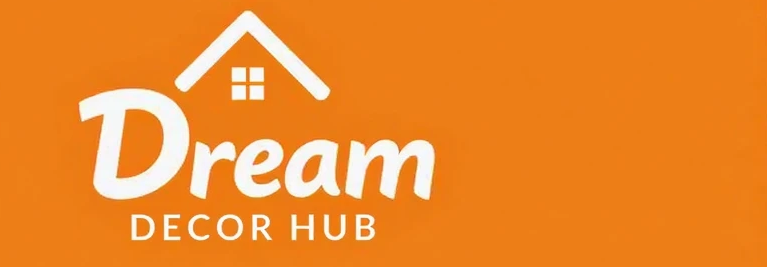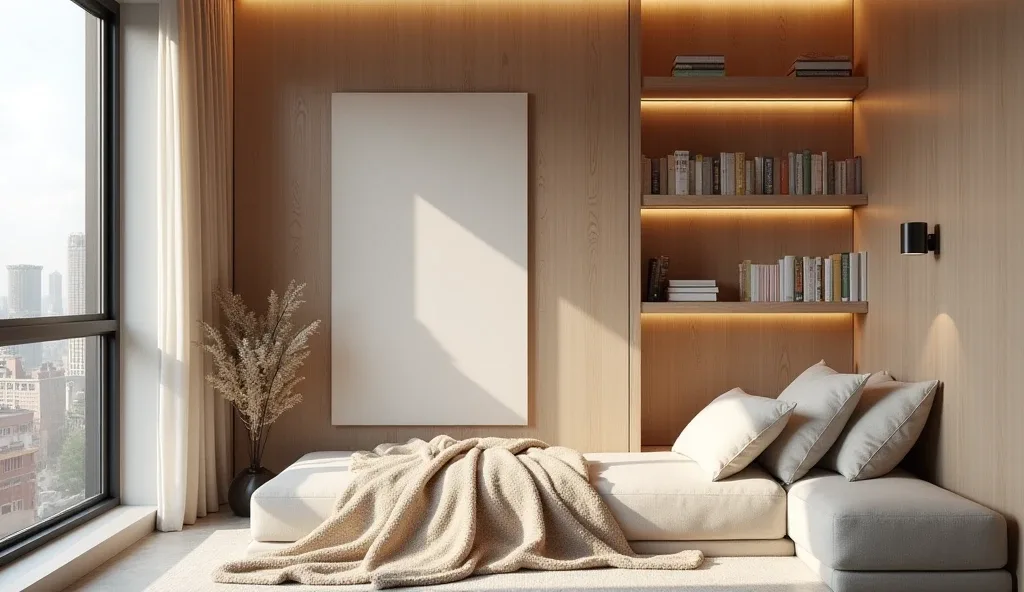Let’s address the elephant in the room—or should I say, the pile of toys, art supplies, and random kid stuff that seems to multiply overnight in every corner of your house. You love your children dearly, but sometimes you look around and wonder if it’s actually possible to have both kids and a home that doesn’t look like a toy store exploded.
You’ve seen those gorgeous family homes on Instagram where everything looks pristine and organized, and you think “sure, but do actual children live there?” The truth is, you absolutely can have a beautiful, organized home with kids—it just requires different strategies than the organization advice designed for adults only.
The secret isn’t getting your kids to be naturally neat (good luck with that). It’s creating systems that work with how children actually behave, while still looking sophisticated enough that you’re not embarrassed when other adults come over. Think of it as stealth organization—functional enough that kids can actually use it, beautiful enough that it elevates your entire space.
Whether you’re dealing with a playroom that’s taken over your living area, bedrooms that look like clothing bombs went off, or just trying to find places for the endless stream of art projects and school supplies, these organization hacks will help you create a home that works for real families. Ready to prove that “lived-in” doesn’t have to mean “chaotic”? Let’s dive in.
Master the Psychology of Kid-Friendly Organization
Before we get into specific solutions, let’s talk about why most organization systems fail when kids are involved. Adult organization relies on discipline and memory—things that developing brains just don’t have yet. Kid-friendly organization needs to be so simple and intuitive that it happens almost automatically.
Make It Easier to Put Away Than Leave Out – This is the golden rule of kid organization. If putting something away requires multiple steps or thinking, it’s not going to happen consistently. The best systems make cleanup the path of least resistance.
Visual Cues Are Everything – Kids are visual learners who respond better to pictures and colors than text labels. Use photo labels, color coding, and clear containers so they can see what goes where without reading or remembering complex systems.
Height Matters More Than You Think – Organization systems that require kids to reach above their heads or crouch down low won’t get used. Everything should be at their natural eye level and arm reach for maximum success.
Keep Categories Simple – Adults can handle nuanced organization categories like “outdoor toys vs. indoor toys.” Kids need broader categories like “toys,” “books,” and “art stuff.” The simpler the system, the more likely it is to work.
Design Systems That Grow With Your Kids
The most successful kid organization systems adapt as children grow, rather than requiring complete overhauls every few years. Professional organizers use specific strategies that work for toddlers and tweens alike.
Flexible Storage Solutions – Choose bins, baskets, and containers that can be repurposed as kids’ needs change. A toy bin can become a sports equipment container, and art supply storage can transition to homework supplies.
Adjustable Heights – Wall-mounted systems, adjustable shelving, and modular storage can be modified as kids grow taller and their possessions change size and type.
Quality Over Quantity – Invest in well-made storage solutions that can handle years of use rather than cheap options that’ll break and need replacing. Kids are hard on their belongings and storage systems.
Room to Expand – Always plan for growth. Kids accumulate more stuff over time, and organization systems need breathing room to accommodate new interests and activities.
Create Beautiful Storage That Adults Love Too
The best kid organization doesn’t scream “children live here”—it integrates seamlessly into your home’s overall aesthetic while being completely functional for little ones.
Neutral Color Palettes – Choose storage in colors that work with your existing decor. Whites, natural woods, and soft neutrals look sophisticated while being completely kid-appropriate.
Quality Materials – Woven baskets, wooden bins, and metal containers look infinitely more elevated than plastic storage, while being just as functional for kids’ belongings.
Strategic Placement – Position kid storage in ways that enhance rather than detract from your room’s design. Built-ins, under-utilized corners, and multi-functional furniture can hide necessary storage while improving your space’s overall flow.
14 Kids Organization Hacks
Color-Coded Toy Bins in a Floating Wall Unit
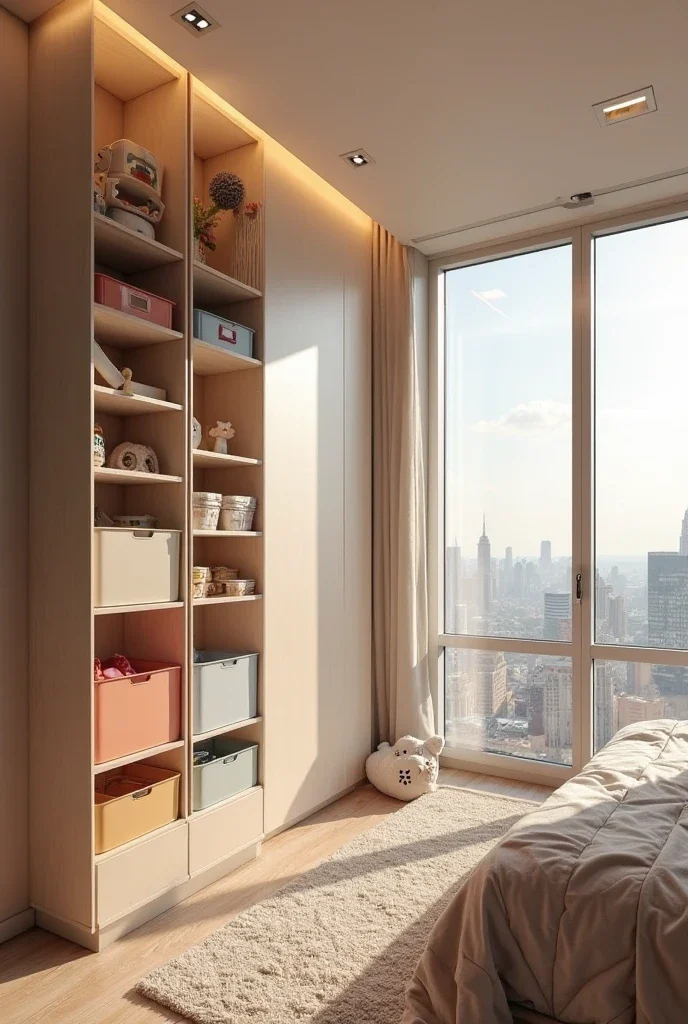
Wall-mounted storage is a game-changer for kids’ rooms because it keeps the floor clear for playing while putting frequently used items at eye level. Color-coding different types of toys—blue for building blocks, green for art supplies, yellow for dress-up clothes—makes cleanup intuitive even for non-readers.
The floating aspect isn’t just stylish; it makes vacuuming easier and prevents that “lost toy graveyard” that accumulates under traditional storage furniture. Choose bins with easy-grip handles so little hands can manage them independently.
This system works particularly well in shared spaces where you want toy storage that doesn’t overwhelm the room’s adult design. The clean lines and coordinated colors look intentional rather than chaotic.
Under-Bed Pull-Out Drawers With Labeled Storage

Under-bed space is prime real estate that’s often wasted on random storage. Custom pull-out drawers transform this area into highly functional, easily accessible storage that kids can manage themselves.
Label drawers with both pictures and words—photos of the actual items work better than generic clip art. This dual labeling helps pre-readers while supporting kids who are learning to read.
The pull-out mechanism is crucial because it makes the back of the drawer just as accessible as the front. Kids will actually use all the space rather than just shoving things in the front and leaving the back empty.
Chic Rolling Craft Cart With Gold Accents
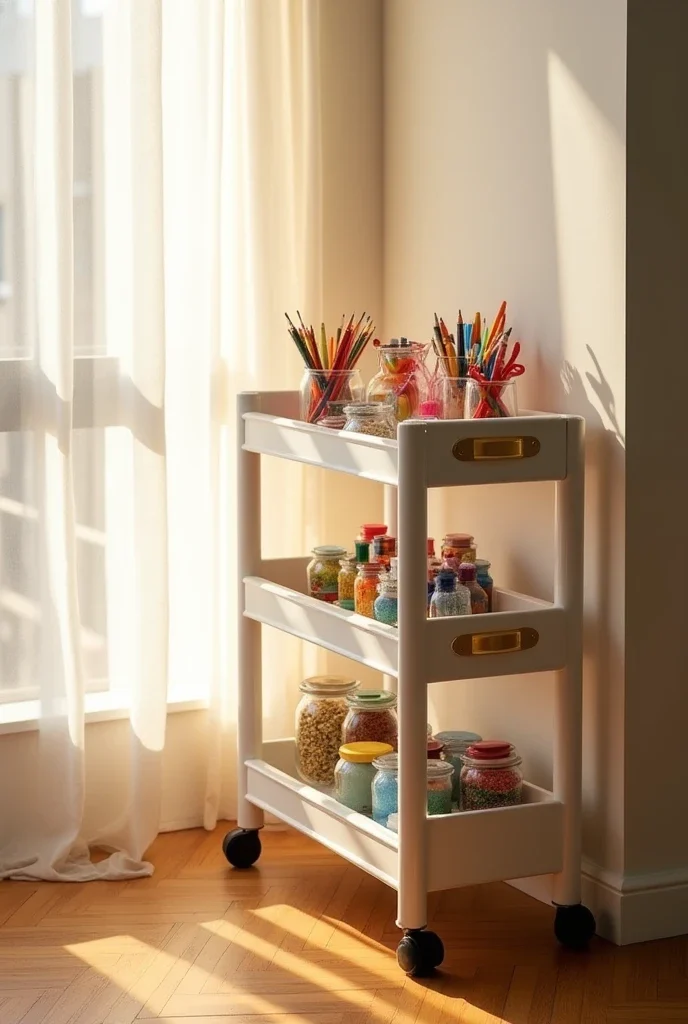
A rolling cart keeps art supplies organized and portable, moving from homework desk to kitchen table to outdoor patio as needed. The mobility means craft time can happen anywhere without leaving supplies scattered throughout the house.
Gold accents elevate what could be purely functional storage into something that looks intentional and stylish. Choose a cart with multiple tiers and small containers that keep supplies separated and easy to find.
The key is making this a “closed system”—everything needed for art projects lives on the cart, and everything goes back on the cart when finished. This prevents the gradual migration of art supplies throughout the house.
Wall-Mounted Homework Station With Pegboard Storage
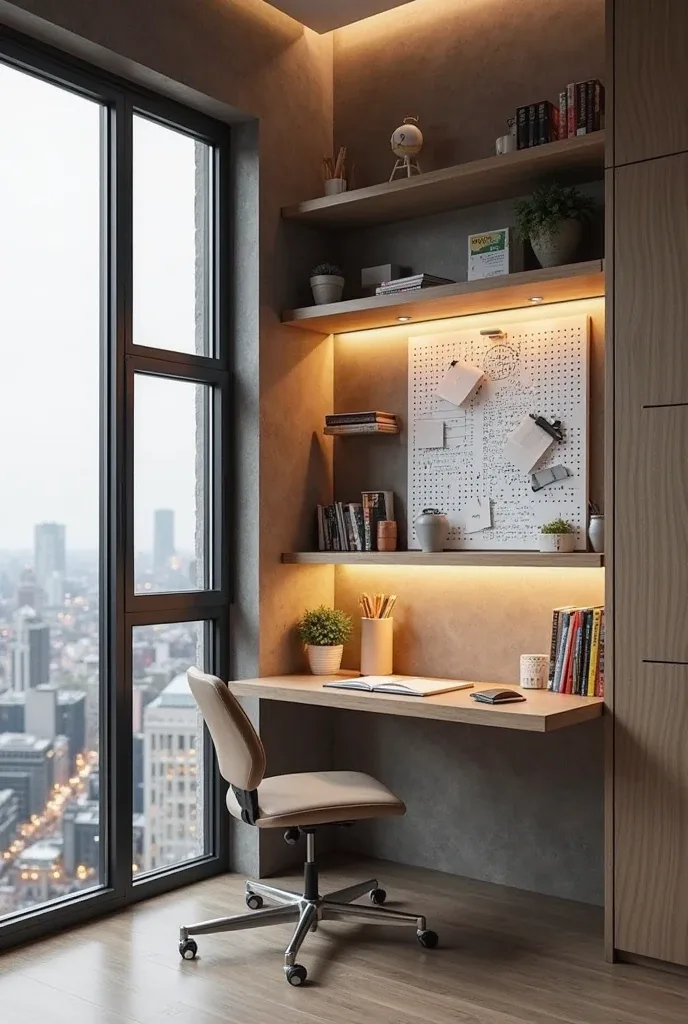
A dedicated homework space, even in a small area, communicates that schoolwork is important while keeping supplies organized and easily accessible. Wall-mounting saves floor space while creating a defined work zone.
Pegboard storage is genius because it adapts to changing needs—hooks and containers can be moved as supplies change or as kids develop new organizational preferences. Everything is visible and within arm’s reach.
The key is keeping this space exclusively for homework. When other activities creep in, the space loses its effectiveness. Strong boundaries around the space’s purpose help kids mentally prepare for focused work time.
IKEA Kallax Hack With Woven Bins & Plant Decor
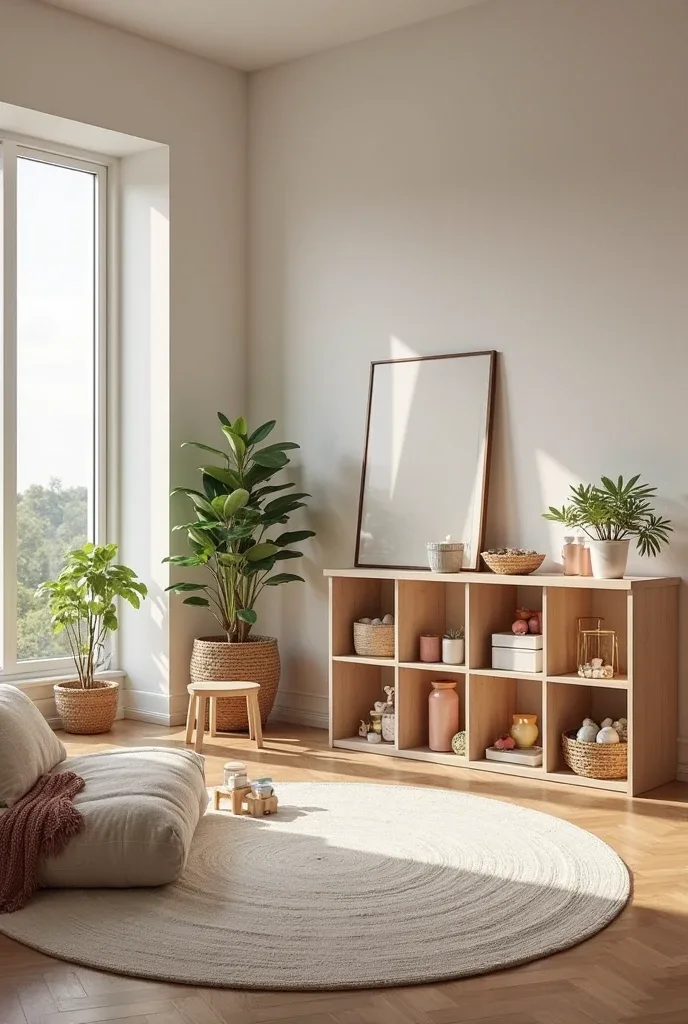
The IKEA Kallax unit is beloved by organizers because it’s affordable, sturdy, and completely modular. Adding high-quality woven bins and a few plants transforms it from obvious furniture store purchase to custom-looking built-in storage.
The cube format is perfect for kids because each space has clear boundaries—one cube for board games, one for art supplies, one for building toys. The defined spaces prevent the “everything mixed together” chaos that makes cleanup overwhelming.
Plants on top aren’t just decorative—they teach kids responsibility for living things while improving air quality in play spaces. Choose low-maintenance varieties that can handle occasional overwatering from enthusiastic young gardeners.
Mini Mudroom Nook With Low-Hanging Hooks
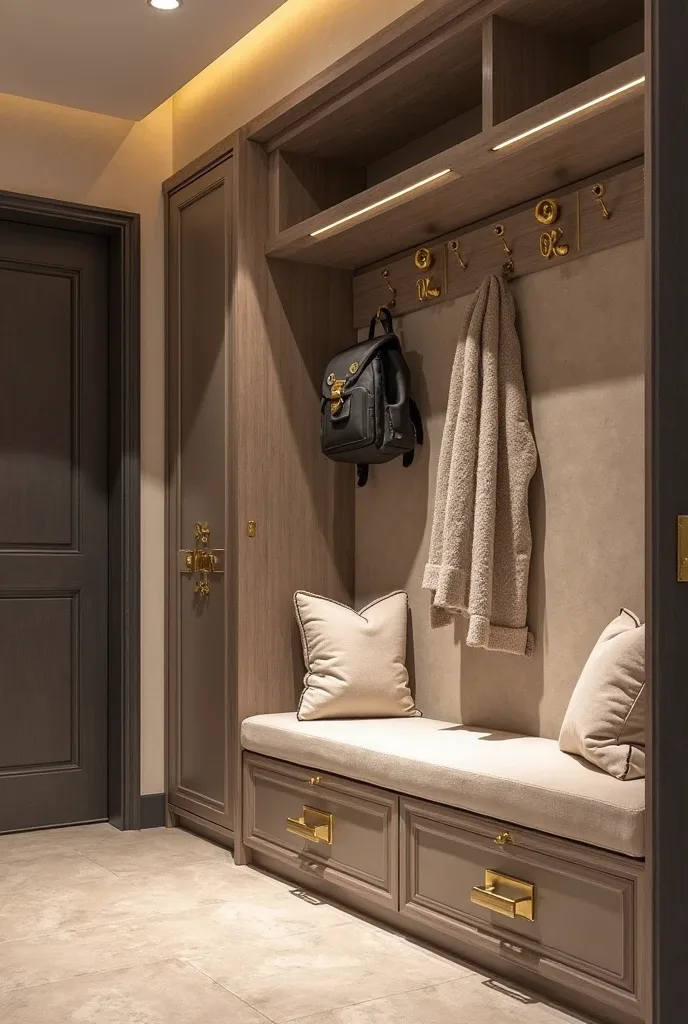
A dedicated drop zone for backpacks, jackets, and shoes prevents these daily items from being scattered throughout the house. Even a small nook can be transformed into highly functional mudroom space with the right organization elements.
Low-hanging hooks are essential—kids won’t hang up items that require stretching or standing on tiptoes. Individual hooks for each child prevent the “pile everything on one hook” syndrome that leads to dropped items.
Built-in seating with storage underneath maximizes the space’s functionality while providing a spot for putting on shoes. This combination makes the nook useful for the entire family, not just kids.
Reading Nook With Built-In Vertical Bookshelves
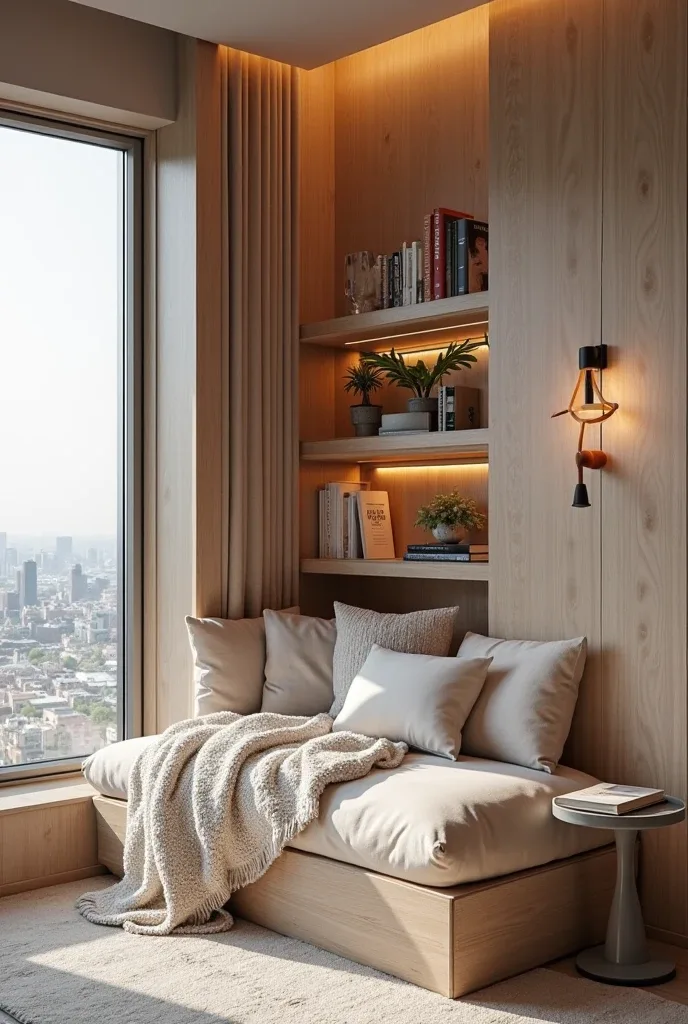
A cozy reading corner encourages literacy while keeping books organized and easily browsable. Vertical shelving displays books spine-out like a library, making it easy to find specific titles and see what’s available.
The seating area should be genuinely comfortable—kids will only use a reading nook if it’s more appealing than other seating options. Soft cushions, good lighting, and a view (even if it’s just of the room) make the space inviting.
Forward-facing book display for a few special titles draws kids to new or favorite books, while spine-out storage for the majority keeps the collection organized and space-efficient.
Clear Acrylic Drawers for Art Supplies
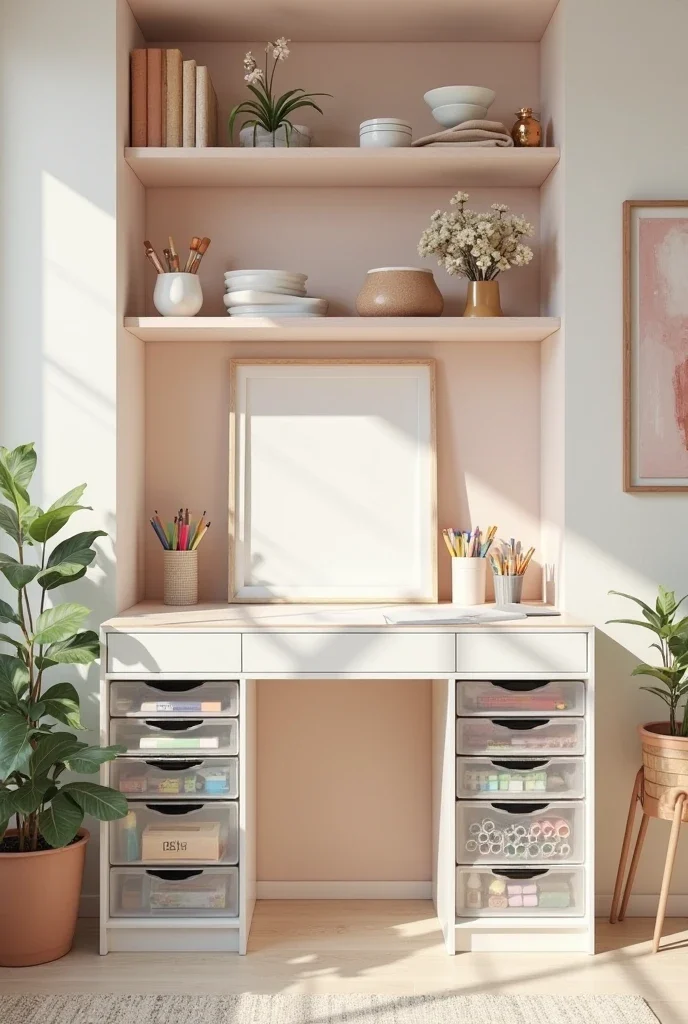
Transparent storage is perfect for art supplies because kids can see exactly what’s available without opening multiple containers. This reduces the “dumping everything out to find one crayon” behavior that creates massive messes.
Stack-able drawers maximize vertical space while keeping different supplies separated. Dedicate each drawer to one type of supply—markers, crayons, stickers, paper—so kids learn to put things back in their designated spots.
The clear material also makes it obvious when supplies are running low, helping parents stay ahead of the “we’re out of glue sticks right before the big project is due” crisis.
Toy Rotation Baskets Behind Sliding Doors

Toy rotation reduces clutter while making existing toys feel new and exciting. Hidden storage keeps backup toys out of sight and out of mind until it’s time to rotate them into active play.
Sliding doors are preferable to hinged doors in kids’ spaces because they don’t swing into play areas or create pinch points. The sleek appearance integrates seamlessly into room design while concealing necessary storage.
The key to successful toy rotation is keeping it simple—swap toys monthly rather than weekly, and involve kids in choosing which toys go “on vacation” and which ones come back out to play.
Labeled Shoe Drawers Below Window Bench
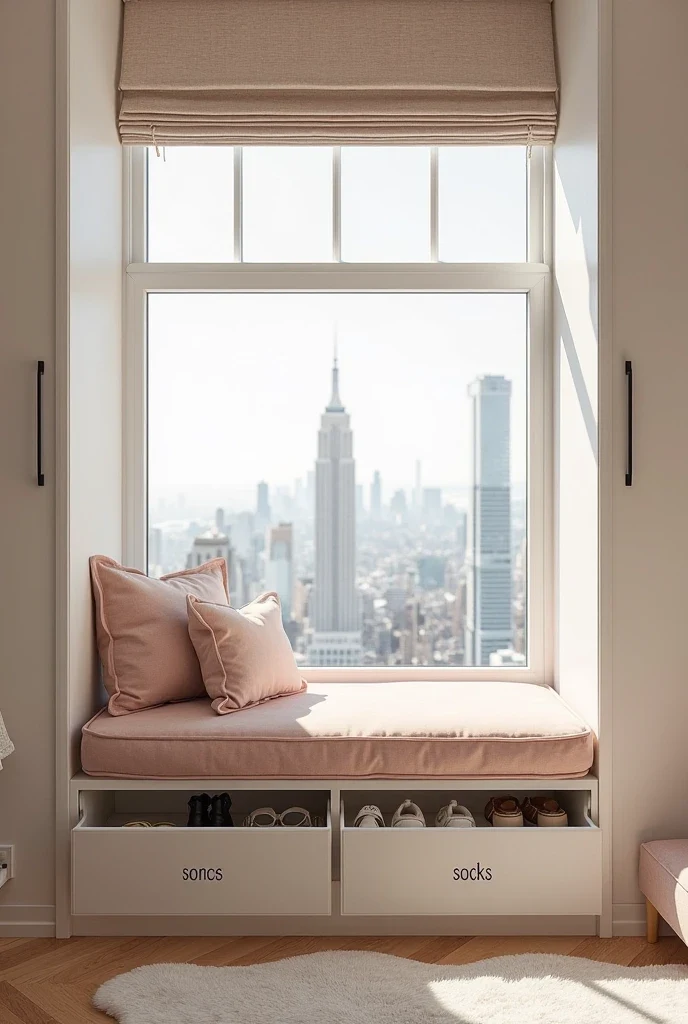
Window seats are underutilized storage opportunities, especially in kids’ rooms. Built-in drawers below seating maximize storage while creating a cozy spot for reading or quiet activities.
Shoe storage is perfect for this location because it’s not accessed constantly throughout the day—mostly just morning and evening. Labels help kids find matching pairs and put shoes away in the correct drawers.
The bench seating serves double duty as both storage and functional furniture, making it ideal for smaller rooms where every piece needs to earn its place.
Magnetic Wall Board for School Supplies & Notes
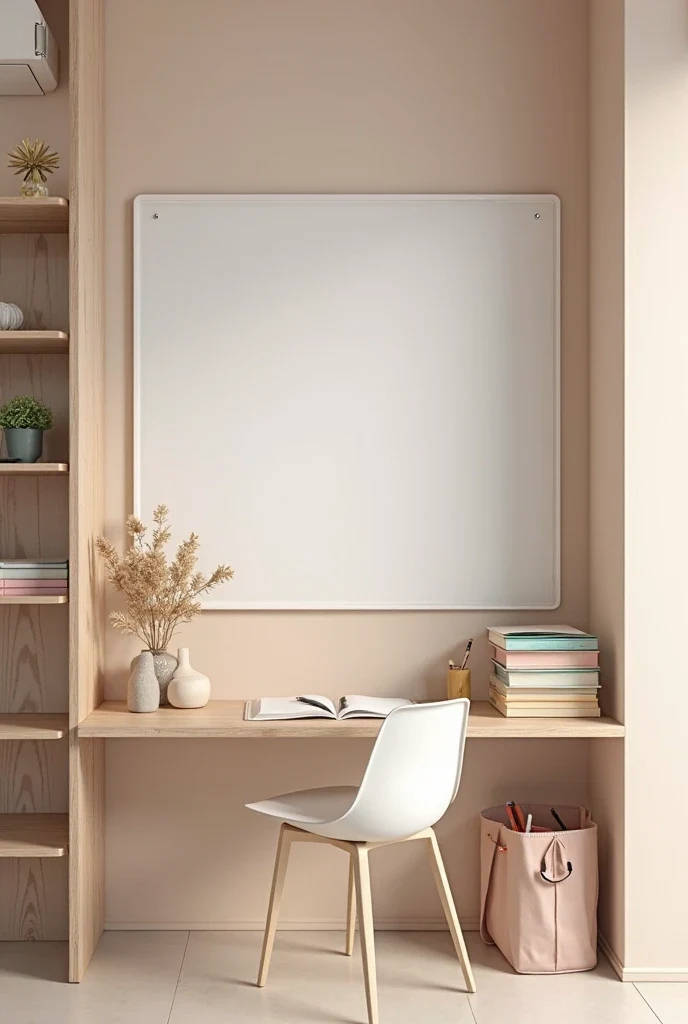
A magnetic board creates a command center for school-related items while taking up minimal floor space. Important papers, permission slips, and reminders stay visible and organized rather than disappearing into backpack black holes.
Magnetic containers hold frequently used supplies like pencils, erasers, and calculators, keeping them accessible but contained. This prevents the gradual migration of school supplies throughout the house.
The key is positioning the board at kid height and keeping it focused on school-only items. When it becomes a catch-all for random papers, it loses effectiveness.
Slim Vertical Tower Organizer for Tight Corners
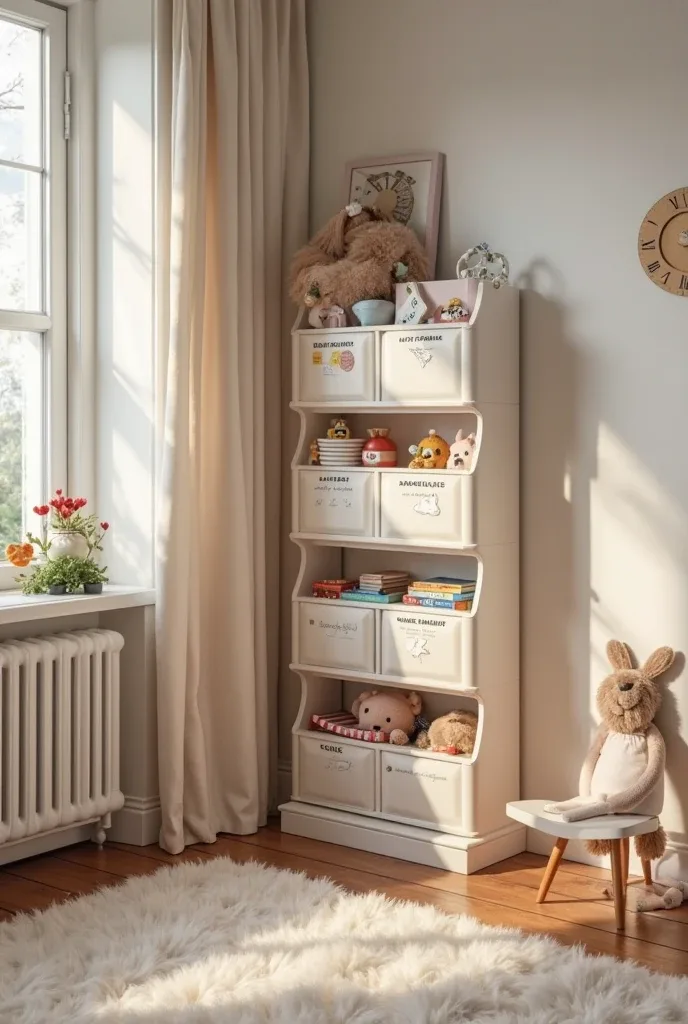
Corner spaces are often wasted in kids’ rooms, but vertical tower organizers maximize storage in these awkward areas. Slim profiles fit into spaces too narrow for traditional furniture while providing substantial storage capacity.
Each cubby should hold one category of items—puzzles, small toys, books, or games. The narrow format naturally limits how much can be stored in each space, preventing overwhelming accumulation.
This type of storage works particularly well for items that are used occasionally rather than daily. Easy access encourages kids to put things away, while the vertical format keeps floor space clear for active play.
Stylish Over-the-Door Pocket Organizer With Labels
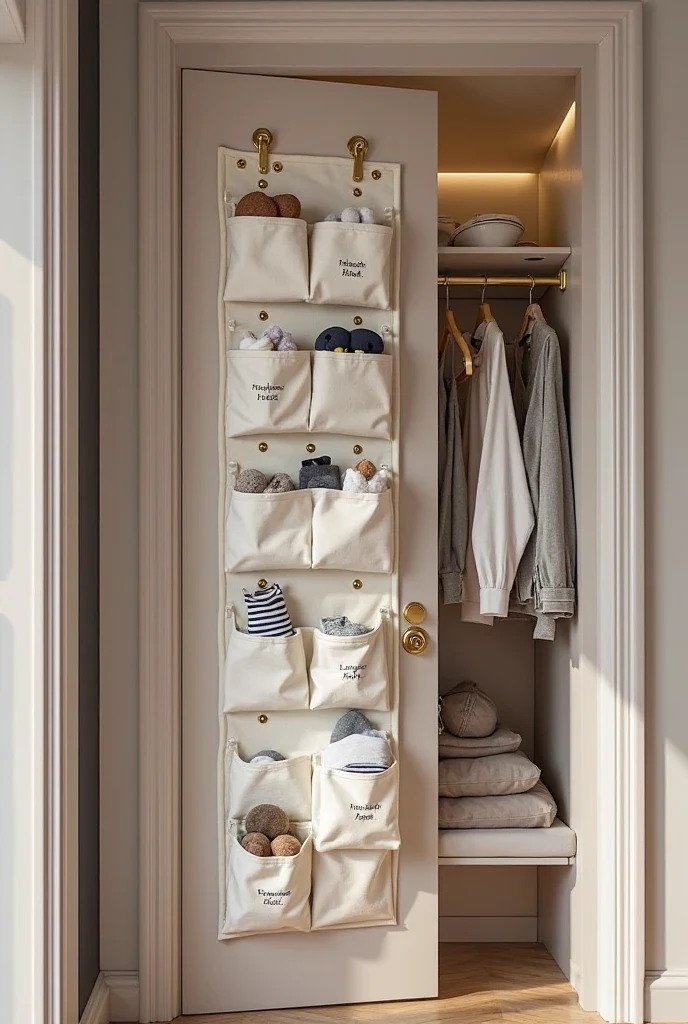
Door space is prime real estate that’s often completely unused. Over-the-door organizers add substantial storage without taking up any floor or wall space, making them perfect for small rooms.
Choose fabric organizers over plastic ones—they look more sophisticated and integrate better with room design. Clear plastic pockets work well for frequently used items, while fabric pockets are better for storage that doesn’t need to be constantly visible.
The key is keeping pocket contents to items that are actually used regularly. When pockets become dumping grounds for random objects, the system stops working effectively.
Also Read: 15 Small Bathroom Design Ideas That’ll Make Your Tiny Space Feel Like a Luxury Suite
Fold-Away Desk With Storage Cubes Below
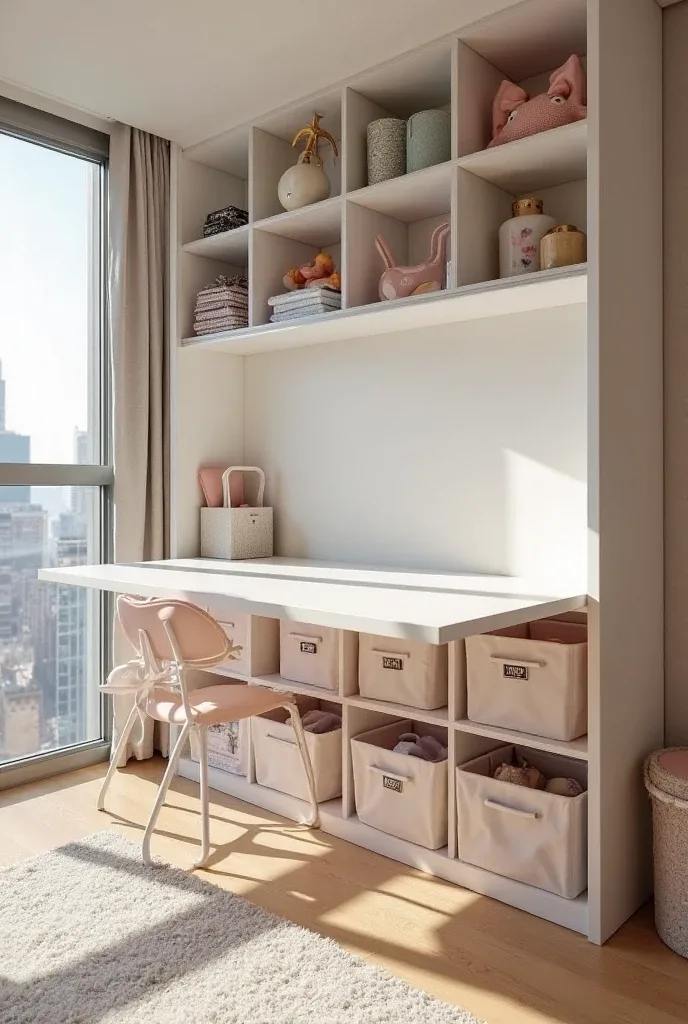
Wall-mounted fold-down desks provide workspace when needed while disappearing completely when not in use. This is perfect for small bedrooms where permanent desk furniture would overwhelm the space.
Storage cubes below the desk keep homework supplies organized and easily accessible. When the desk folds up, the storage remains accessible for non-homework activities like art projects or quiet play.
This system works particularly well for kids who do homework in different locations—the supplies stay organized even when the workspace isn’t being used, and everything is ready when homework time arrives.
Final Thoughts
The most successful kid organization systems aren’t the ones that look perfect in photos—they’re the ones that actually get used day after day by real children in real families. Your goal isn’t to eliminate all evidence that kids live in your home; it’s to create systems that allow family life to flow smoothly while maintaining the style and functionality you want as an adult.
The best organized homes with kids are the ones where organization feels effortless rather than constant work. When systems are designed well, cleanup becomes a natural part of daily routines rather than a dreaded battle that no one wins.
Remember, organization is a skill that develops over time. Don’t expect perfection immediately—focus on systems that make progress easier and celebrate small improvements. Your kids are learning life skills that will serve them well into adulthood, and you’re creating a home that works for everyone who lives there.
